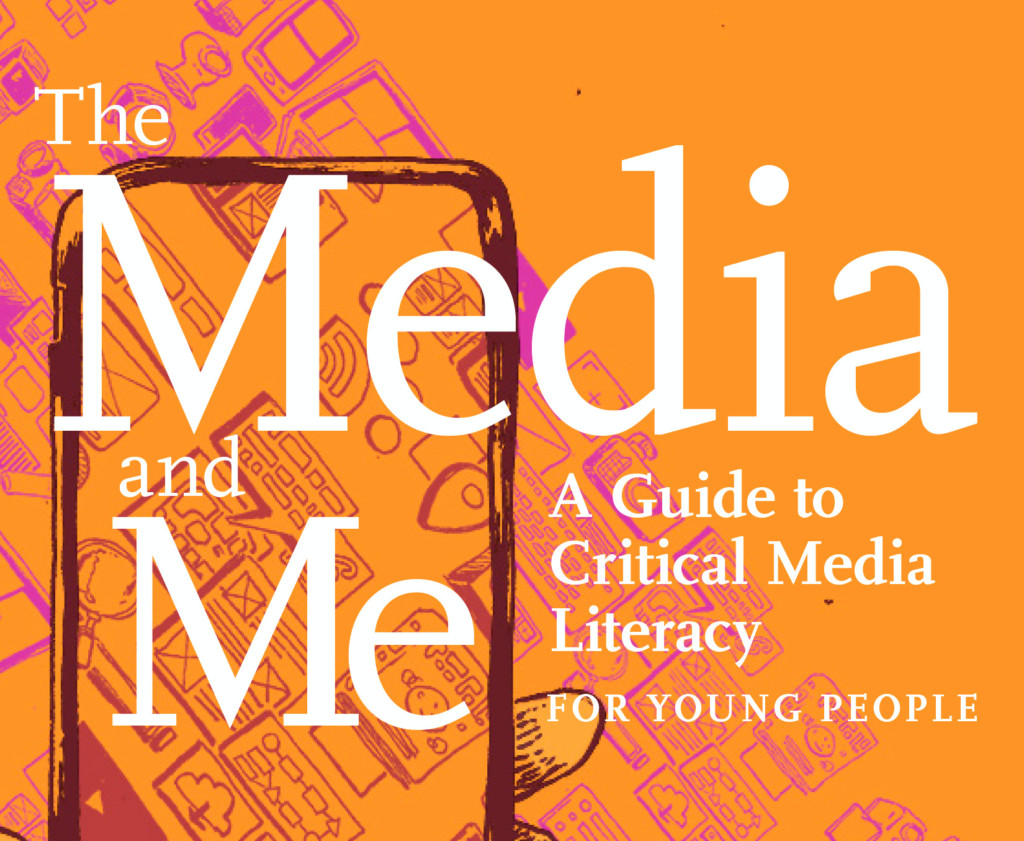Looking Behind the Screen: Critical Media Literacy Gives Us Tools to Understand How Media Shapes Our Perception of Others and the World
Key Points
-
CML is a liberatory approach to making sense of the world.
-
CML seeks to equip people with the tools to be independent media users, free from oppression or restrictions by others.

Adapted from The Media and Me: A Guide to Critical Media Literacy for Young People by Project Censored the Media Revolution Collective
Maybe when you hear the word “critical,” you think of negative stuff: to be critical must mean that you dislike something, right? Not always! “Critical” can be used in a variety of ways, including thinking carefully about something (critical thinking), asking questions of something (critical inquiry), and practicing media literacy (critical media literacy).
So, what’s critical about critical media literacy (CML)? Trust us, this is not an order to “eat your spinach!” or to ignore media that bring you joy and happiness. Instead, what’s critical about CML is taking a bit of distance from our media choices to examine them more thoroughly. Instead of looking only at our screens, we want to look behind the screens (or behind the scenes) to understand how the content got to us.
Many U.S. schools teach media through a protectionist position—that is, teaching us that the media are bad for us. Protectionists are often concerned with media content they find dangerous, such as representations that glamorize violence, sex, or drug and alcohol use. They assume that once you learn that the media are bad, you will choose to turn them off.
CML is a liberatory approach to making sense of the world.
Project Censored the Media Revolution Collective
Another way of studying the media in the United States is the celebratory position. In this view, you are considered an active agent and your knowledge and media use are rewarded. In practice, advocates of a celebratory approach to media literacy have focused mainly on interactive media, such as computer games, or material you may create for your social media profiles.
The protectionist and celebrationist positions seem like opposites of each other, but they actually have a fair amount in common. Both expend a lot of energy on the content of the media—what’s on the screen—without much attention, if any, on how that content came to be. Both believe that young people ought to make “better” media choices—but each position offers only a partial story about the media you use. Both are missing a serious investigation into the means of production—that is, how that media content came to be. Neither position addresses the political economy of media analysis—the study of media ownership, production, and distribution.
Despite their differences, protectionism and celebration share an important commonality: they both focus primarily on content and representation.
For both protectionism and celebration, media content is often approached as individual products, and these are often explored in isolation. For example, you might be involved in a discussion about a particular scene in a movie where you may talk about the dialogue between the characters or the lighting or sound effects. While that is important, it should not be the entire conversation. Critical media literacy will ask you to think about how that scene fits into the movie as a whole. It will also ask how you accessed that movie (did you watch it in a movie theater? on a streaming service? on a particular device?). CML will also ask you to think about when the movie was originally released, which may include a discussion of current events. CML will ask who wrote, produced, and distributed the movie—and, by extension, might ask what else those people and production companies had written, produced, and distributed. CML, therefore, fills in the gaps in representation.
As you can see from all these questions, CML is inquiry-based. What we do in CML is ask a lot of questions about our media use. We ask questions about many topics, including gender, race, class, and sexuality. Most importantly, we ask questions about power: Who has it and what they do with it, as well as who does not have it and why not. That is one reason why we ask questions about ownership, production, and distribution: because that’s where much of the power of media originates.
One of the many inquiries that CML urges us to take up involves analyzing stereotypes, which are overgeneralizations or fixed beliefs about a certain group. These include xenophobic stereotypes, such as the “Arab terrorist”; sexist ones, such as the “dumb blonde girl”; and racist ones, such as the “Black criminal,” to name a few obvious examples. The contemporary use of this term tracks back to Walter Lippmann, a giant of twentieth-century journalism and a pioneer of contemporary media studies. Looking at stereotypes critically can help us realize how media shape our perception of others and the of the world. Consider the following questions.
- What types of stereotypes have you encountered, online or in real life?
- Are there any stereotypes that affect you as an in individual?
- Can you think of any stereotypes that are beneficial or positive?
- Whom do these stereotypes benefit?
- Who do you think is in charge of producing these messages?
- How do you think the messages end up taking so much space online?
CML is a liberatory approach to making sense of the world. CML seeks to equip people with the tools to be independent media users, free from oppression or restrictions by others. We recognize that misinformation, disinformation, stereotypes, and problematic representations exist, but as media users we do not have to accept or internalize them. Instead, we can expose, question, and oppose them.





0 Comments
Leave a Comment
Your email address will not be published. All fields are required.